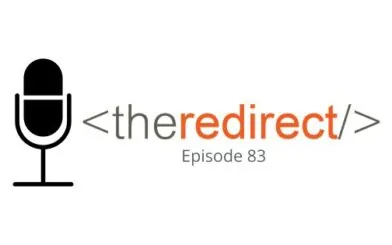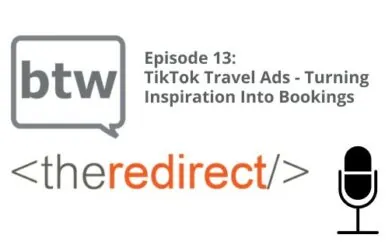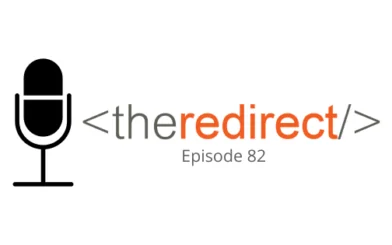Google’s Removal of &num=100 Could Impact Your Marketing Reports
Google quietly disabled the “&num=100” search parameter, a long-standing tool that let SEOs pull 100 results on a page instead of the default “top 10.” While your audience who is looking for your brand will likely not notice this change, digital marketers and search professionals are feeling the ripple effects in reporting and workflow.
In this episode of BTW w/ BTM, we dig into what changed, why it matters, and how marketers should respond. Give it a listen below, or feel free to see the highlights in the show notes.
What is &num=100?
For years, if you appended a Google Search URL, it allowed SEOs to view 100 listings per page.
(e.g., https://www.google.com/search?q=example+of+num%3D100+search+results&num=100)
Google has disabled the parameter entirely, returning search results to the standard 10 per page, which is the default that you as a user will see anyways.
Why Does This Change Matter?
Changes to the &num=100 matters in a multitude of ways, and it wasn’t just a convenience hack. It was essential as a tool for SEO workflows – one you probably didn’t even realize.
- Rank Tracking – It allowed SEO tools and scripts to capture the top 100 search results in a single request.
- SERP Analysis – Making competitor and visibility analysis faster and more comprehensive.
- Efficiency – Overall it reduced the time and friction in manual research and reporting processes.
What Does the Data Tell Us?
The most notable side effect from removing &num=100 you will see is that reporting on impressions will shift inside of Google Search Console. For some brands, this has proven to be a decrease in impressions by nearly 50%. Yet, traffic and clicks remain unchanged.
The charts might look different, but your audience reach hasn’t actually suffered.
This suggests the change could be viewed more as a reporting artifact than a performance problem. The distinction is crucial when explaining trends to stakeholders and within your reporting details that focus on organic search efficacy.

How is the SEO Industry Responding?
Naturally, the SEO community is a skeptical bunch, and for good reason. Search Engine Roundtable’s Barry Schwartz summarized it well, stating “SEOs are frustrated, not because this impacts everyday users, but because it removes a behind-the-scenes data lifeline.”
Some in the industry are asking whether this ties into larger efforts by Google to limit scraping and external data extraction, especially with major initiatives around AI-driven search experiences. Considering the data side, if half of the impressions were coming in from crawlers and SEO tools, it does lead us down the path of wanting to understand how much that activity was costing Google on a daily basis.
Keeping in mind, crawls and queries to a search engine are not “free.” They appear free to us as users, but in reality they cost in energy usage across data centers that are charged with the computing power to process data retrieval.
If you’d like to get deep in the weeds, make the jump and read the full analysis from Brodie Clark.
Possible Outcomes
If you’re in the digital marketing space or utilize the data to report on impact your SEO efforts are having, there are some possible outcomes to consider.
- Tools Will Adapt – Expect the major rank trackers and SEO tool providers (SEMrush, Moz, Ahrefs, etc.) to shift to a paginated query or other method.
- Potential Restrictions Ahead – This could be the first step in further limiting SERP data visibility.
- Temporary Pain – Once workflows adjust, this may fade into the background after the dust settles, but with lessons learned on data reliance. It serves as a good reminder to not pull your insights from one single stream of data.
Key Takeaways & Next Steps
Working within the digital marketing space, we all understand too well how attributing the success of our online marketing efforts impact a brand. These types of changes further the specialty and focus to follow these trends over time. Consider the following in your upcoming discussions:
- Audit Your Tools – If reporting looks off, this parameter change might be the cause.
- Don’t Panic – As always, there is no need for panic over drops in search console impressions that are tied to these changes. Validate the changes with other data such as click activity.
- Expect Workarounds – Tool providers will pivot, many already have. But data gathering could take longer or look different in the long run and you’ll need to exercise patience.
- Watch Google’s Direction – This might be a signal of broader restrictions in how SERPs can be analyzed externally.
While the removal of “&num=100” might not make headlines for many marketers, and certainly not for your audiences, it’s another reminder of how dependent digital marketers can be on Google’s ecosystem.
For now, the key is to separate reporting quirks from real performance changes. Preparing for more adjustments as Google reshapes how we see and measure search results.
Do you have concerns over impression drops and reporting shifts that are unrelated to this change? Reach out, our technical SEO specialists would love to talk through your challenges.
Additional Resources
[read] Digital PR + SEO: A Match Made For Modern Marketing
[read] Using PPC to Identify Missed Organic Search Opportunities
[listen] AI Optimization: Separating Hype from Reality on The Redirect Podcast
[listen] Beyond Google: Are People Adapting to AI Search on The Redirect Podcast




